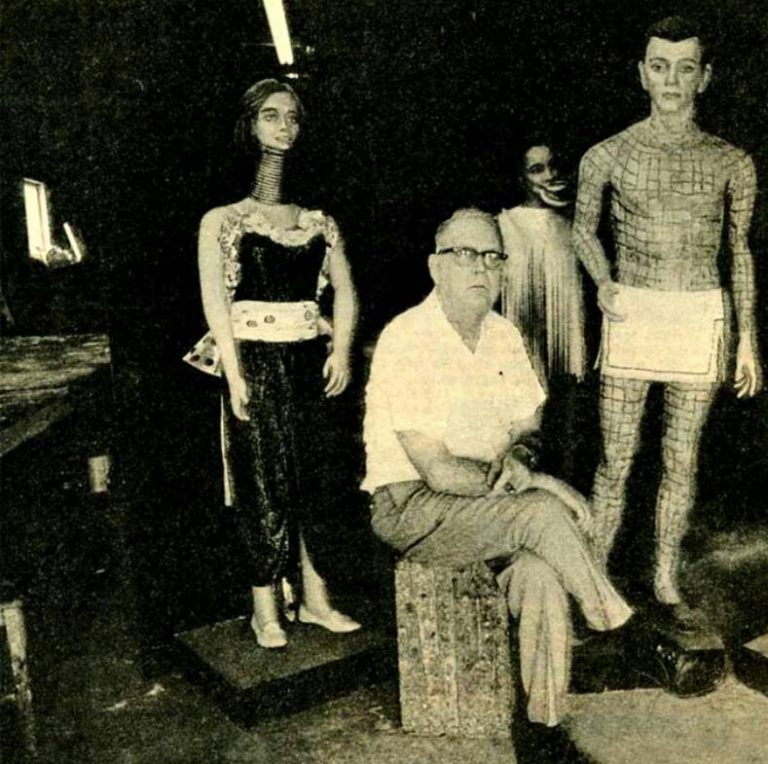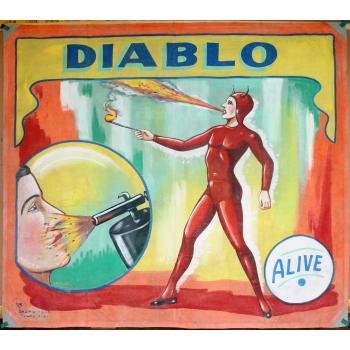
Snap Wyatt: The Bold Brush of the Sideshow World
Snap Wyatt: The Bold Brush of the Sideshow World
In the colorful, gritty world of American circus and carnival history, few names stand as tall as Snap Wyatt. Born Charles J. Wyatt in 1905, he would become one of the most prolific and recognizable banner painters of the 20th century—a legend in a uniquely American art form. Often working alongside other giants of the sideshow world like Fred G. Johnson and Jack Cripe, Wyatt’s work turned the midway into a gallery of wild imagination and irresistible curiosity.
A Painter with a Purpose
Snap Wyatt wasn’t creating art for galleries or salons. His canvas was 10-foot-high swaths of muslin, painted with quick-drying tempera or house paint. His mission? To sell the show. His banners promised spectacles just beyond the flap: the Monkey Girl, the Fireproof Woman, the Two-Headed Baby. They were designed to lure people in—and they did so brilliantly.
With broad strokes, vivid color, and lettering that practically shouted at passersby, Wyatt’s banners became synonymous with the American sideshow. His style was unmistakable: exaggerated features, dramatic expressions, and bold red lettering that looked like it had been carved into the fabric with a switchblade.
Fast, Fearless, and Functional
Wyatt was known not only for his visual style but also for his incredible speed. Some say he could produce a full-size banner in less than a day. In a business where seasons were short and money was tight, that speed made him indispensable to showmen across the country.
He worked with various tent shows and carnivals throughout the 1930s to 1960s, including the James E. Strates Shows and other big names on the traveling circuit. When banners faded or tore, Wyatt could churn out replacements almost as quickly as they were ordered.
More Than a Gimmick
Though some dismissed sideshow banners as lowbrow or kitsch, Snap Wyatt’s work has since been recognized as a vital part of American folk art. Museums and collectors now seek out his surviving pieces, which are increasingly rare due to their functional, disposable origins. What was once merely a tool to attract a crowd has become a treasured artifact of a lost American culture.
A Legacy in Red and Yellow
Snap Wyatt passed away in 1984, but his work still roars with life. His banners are part of major folk art collections and have appeared in exhibits celebrating the art of the sideshow, including those at the American Folk Art Museum and private collections nationwide.
Today, Wyatt’s bold brushwork continues to inspire a new generation of artists, muralists, and typographers drawn to the raw energy and unapologetic showmanship of his work. His banners weren’t just signs—they were dreams sold in 15 words or less.



